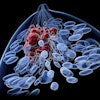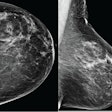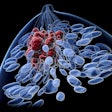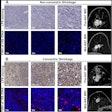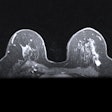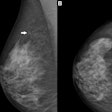Volpara Solutions is highlighting findings of a new study that suggest automated volumetric tools for measuring breast density are as good at predicting breast cancer risk as traditional area-based approaches.
Measuring breast tissue density accurately can improve clinicians' ability to predict breast cancer risk and to tailor screening protocols appropriately, according to researchers at the London School of Hygiene and Tropical Medicine in the U.K. Lead author Dr. Amanda Eng and colleagues assessed the efficacy of six breast density measurement tools. Their findings have been published in Breast Cancer Research.
"Mammographic density is one of the strongest breast cancer risk factors which is being increasingly used to tailor preventive and screening strategies to a woman's risk," Eng and colleagues wrote. "We conducted the first comparison of the ability of six methods of mammographic density measurement to predict breast cancer risk, including well-established analog methods adapted, and novel methods developed, for full-field digital mammography."
Eng's group investigated the performance of three area-based approaches (BI-RADS, the University of Toronto's semiautomated Cumulus software, and the fully automated ImageJ-based approach) and three volumetric methods (Volpara's VolparaDensity, Hologic's Quantra, and single x-ray absorptiometry) in 3,168 digital mammography images (Breast Cancer Research, September 20, 2014).
All of the methods showed that higher breast density indicated a higher risk of breast cancer, but the association was strongest for VolparaDensity and Cumulus, according to Volpara. VolparaDensity and Cumulus were also the only tools that produced breast density measures for all images in the study; the other tools failed to produce readings for up to 11% of the participants.


